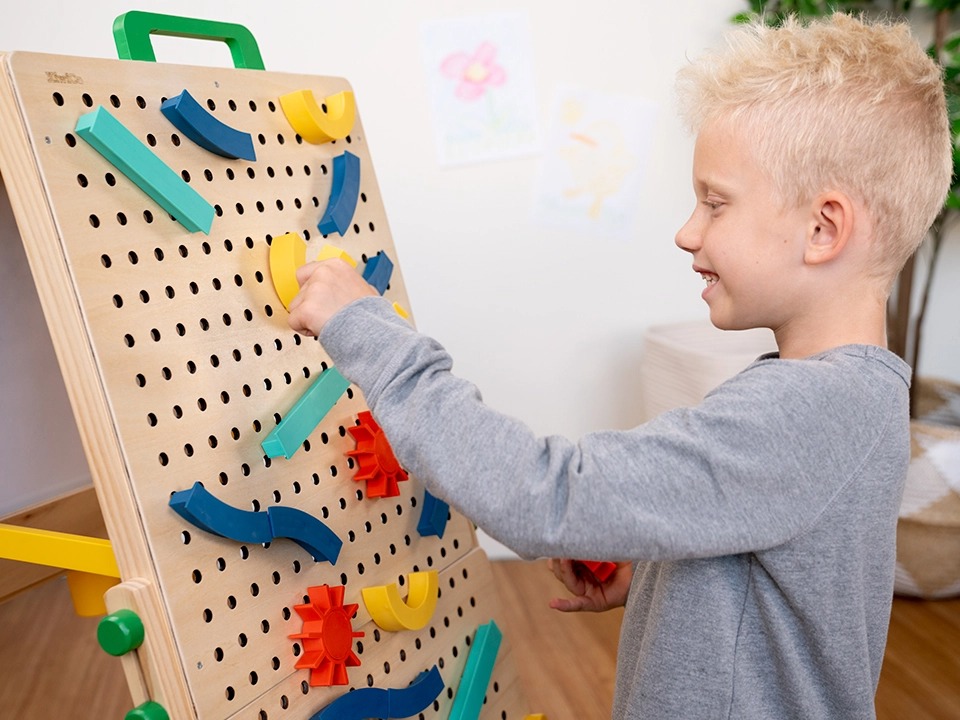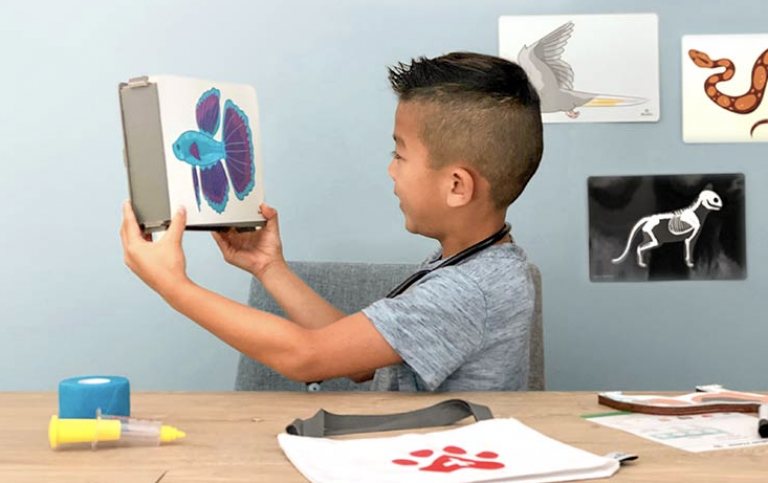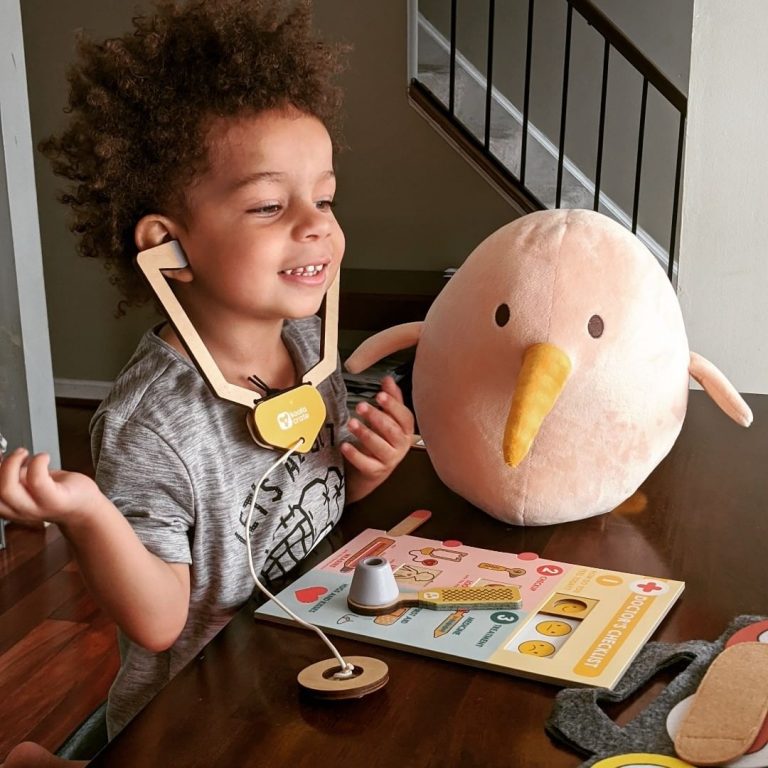The Montessori approach is based on the idea that children have an innate desire to learn. It’s why babies try to grasp at things without being told to and why your toddler demands to inspect every single ant hill they find. In a Montessori education, a child learns as much from their environment as they do from the adult they interact with.
That’s where KiwiCo comes in! We believe the more hands-on the better, and if at first you don’t succeed, you tinker, tinker, and tinker. All of our products are designed to be fun, educational, and most importantly, tap into that innate desire to learn.
What Makes a Toy Montessori?
1. Made Mostly of Natural Materials

You’ll find lots of wood, metal, and other natural materials in Montessori toys. This is not only because they are safer, but because the natural materials allow children to learn about science through experience. Natural materials allow them to independently observe different weights, textures, and interactions — wood is heavier than plastic, metal warms up in your hand, and gravity will pull a marble down an epic marble run, like the one you can create with our Marble Run + Art Easel.
2. Encourage Participation

Montessori toys encourage kids to explore and manipulate on their own, with their own ideas — allowing them to learn about their environment and their own capabilities. You won’t find any toys with buttons that make random sounds or flashing lights. Instead, you’ll find toys like the Cylinder Blocks from the Solve With Me crate in our Panda Crate line. Panda Crates encourage babies ages 0-24 months to learn about size differences through sight, tough, and feel.
3. Open-ended Play

Open-ended toys are toys that have more than one function. For example, our Pop-up Felt Play Mat can be a town filled with houses and people, the scene of a race or a big parade, an epic farmscape, a bustling city, or a picnic mat. For a child, the possibilities are endless.
4. Focus on Reality
Montessori toys encourage discoveries about the environment in which we live. The Montessori approach promotes using realistic images for play, like the anatomy images in our Veterinarian Starter Kit and using correct scientific terms like capillary action in our Crystal Chemistry Tree. Instead of oversimplifying, these toys allow children to rise to the challenge, knowing that they are capable of learning complex ideas.

Setting up a supportive environment isn’t just about the toys you provide your child. It’s also as simple as you getting in some self-care and painting on your own and embracing failures as a good thing. For more on setting up a creative environment, check out our blog post: 10 Simple Ways to Raise Creative Kids.
